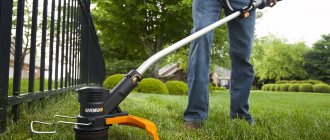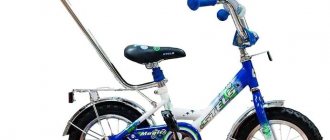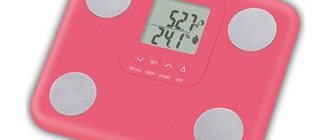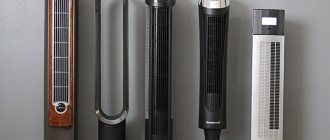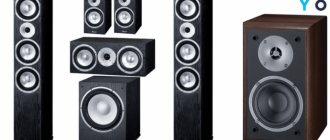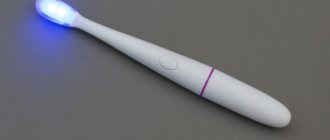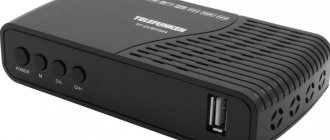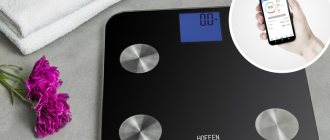But as soon as you buy a specific model and use it closely for a couple of weeks, all sorts of “jambs” and non-obvious shortcomings immediately begin to emerge.
Even the most famous manufacturers have a lot of questions. They may be fine with hand-held flashlights, but not so much in terms of headlamps.
So what should you do to ensure that you have a really good, high-quality flashlight on your head? Let's figure it out.
Metal or plastic?
A headlamp can be either plastic or metal (anodized aluminum).
Mistake #1
Plastic is definitely better because it is lighter. After all, carrying a flashlight on your head is not at all the same as carrying it in your hands.
On the one hand, it seems that plastic is a good choice due to its lighter weight and price.
This is true if you are a professional cycling, running, or you need a headlamp for short-term household work (going down to the basement or climbing into the attic a couple of times a month).
But in all other cases - hunting, fishing, long and short trips outside the city to nature - look first of all at the aluminum body.
In these situations, the disadvantages of plastic products outweigh all its advantages.
The weight of a flashlight is often overestimated. If you listen to some experts, you get the impression that healthy men suddenly became young ladies with swan necks.
Disadvantages of plastic:
Firstly, due to poor heat dissipation from the LED, its service life is reduced. Sometimes the LED simply falls off the substrate.
Secondly, you will not find truly bright and high-quality plastic lanterns.
An honest long-lasting glow mode for them is 150 lumens. The best you can count on is 300Lm.
Where they write much higher values in advertising brochures, this is just a SHORT-TERM turbo mode.
This is due precisely to the poorer heat dissipation of the plastic case.
Add here the fragility of the material. Sometimes you’re even afraid to put a flashlight in your backpack, so as not to accidentally crush it.
The loops where the strap is attached begin to crack and break over time. The plastic headband is noticeably inferior to the silicone one.
These flashlights are powered by either finger-type batteries (AA/AAA) or a built-in battery of our own production.
Very, very rarely – 18650 elements. Hence – shorter battery life.
Therefore, for long-term use of your headlamp, always choose an aluminum body.
In addition, if you look hard enough, you can find excellent miniature models in this format that you can hardly feel on your head (Acebeam H40).
Tourist and hunting options
Phoenix HL26R
One of the main distinguishing features of this headlamp is the built-in battery pack and very compact overall dimensions. At the same time, the products are lightweight - they weigh about 85-90 grams. You can hardly feel this flashlight on your head. At first glance it may seem that the mount is quite simple, but it reliably holds this lighting fixture in place. On the inside there is a strip made of high-quality elastic rubber, which does not lose its flexibility even in very low temperatures. It is equipped with a silicone gasket that prevents the device from slipping off the user's head.
More: Top 10 best professional microphones
Naturally, it is far from achieving the qualities of a spotlight, but the device is very effective - it is capable of illuminating a distance of up to one hundred meters, easily withstands even serious physical impacts, and the body itself is carefully protected from moisture. There are several operating modes here - short-range, long-range, turbo and emergency, when the flashlight automatically starts giving an SOS light signal
Advantages:
- Fairly light products;
- Illuminates a hundred meters ahead;
- Quite a dense luminous flux;
- Built-in battery, which is enough for 100 hours of device operation in economy mode.
Flaws:
- Poor beam stabilization.
Phoenix HL26R
Bright Beam PANDA 3R
This flashlight has the highest class of protection against moisture - it complies with the IPX-8 standard, the body is shockproof, and is made of high-quality aircraft-grade aluminum of increased reliability. It contains two LED lamps, each of which has its own optical system; they are capable of generating a luminous flux of up to 1100 lm. The flashlight has 4 operating modes at once, so it can be adjusted strictly to specific conditions of use. In its brightest mode, it is capable of illuminating a space 115 m ahead.
It is equipped with a built-in battery with a capacity of 260 mAh, so in medium intensity mode the device can work for 18 hours. The device can be charged via an external battery, by connecting to a laptop, or using a standard smartphone charger.
Advantages:
- Occurs quite often;
- Reliable housing with excellent protection from moisture and dust;
- Attractive appearance;
- Built-in battery of decent capacity;
- Quite convenient to manage.
Flaws:
- The mount is not very comfortable.
Bright Beam PANDA 3R
LED LENSER H7R.2
A very original product, largely due to the fact that this device is equipped with a separate housing, since its battery pack is located in the back of the device. This allows you to make the weight distribution of the device more uniform, which, in turn, does not create additional stress on the neck muscles - this point is very important, since the device is characterized by a decent weight, which is about 170 g.
LED elements are capable of producing a very dense luminous flux - a maximum of 300 lm; if you use focusing, the maximum beam range will be 160 m. The flashlight is equipped with a brightness control, which is located on the battery compartment. The minimum luminous flux power will be 20 Lm. You can charge the device not only from the network, but also from USB. A full battery charge will be enough for 60 hours of continuous operation.
Advantages:
- Compact overall dimensions;
- Sufficiently powerful adjustable luminous flux;
- High reliability;
- Ease of use;
- Even distribution of mass prevents neck muscles from getting tired.
Flaws:
- Quite expensive.
LED LENSER H7R.2
Olight H2R Nova NW
It is distinguished by a large number of unusual design solutions that are usually uncharacteristic of a headlamp, but this approach has helped make this design one of the best for use in hunting or hiking trips. The body is universal, so if necessary, the flashlight can be used as an ordinary hand-held one. The design is very compact - the body length is only 11 cm, magnetic charging is used here, which is also very convenient. The degree of protection against moisture and dust complies with the international standard IPX-8, so the model can easily withstand immersion in water to a depth of up to a meter.
More: Top 7 best push-button phone manufacturers
The maximum brightness of the device is 2300 lm - the same figure as a car headlight. The beam range reaches 150 m, which is quite enough for hunting. The battery can operate without recharging for up to 1080 hours.
Advantages:
- Original mount;
- Can also be used as a hand-held flashlight;
- The brightness is in no way inferior to a car headlight;
- Magnetic charging.
Flaws:
- The only one is its cost.
Olight H2R Nova NW
Monoblock or two blocks?
Headband housings come in two types:
- in the form of a monoblock (LED + power in one housing)
- in the form of two blocks (LED separately + power supply separately (on the back of the head or a long cord in the pocket)
Which one is better? Monoblock is different from monoblock.
The one that is made in an L-shaped case is more universal. You can remove it from your forehead at any time, take it in your hand and use it as a hand-held flashlight.
Of course, there are also intricate Chinese designs in which you need to unscrew the “head” from the front of the case, and then screw it onto the rear cylindrical block for the battery.
But as you understand, this is very inconvenient.
The L-shaped one often has a magnet at the bottom. When you are repairing a car or something in the garage, this place allows you to easily attach the flashlight to any piece of hardware.
On a hike, I stuck a knife into a tree and magnetized a flashlight to it without any problems - convenient!
However, the classic T-shaped monoblock has a much shorter length and better heat dissipation.
It's easier to integrate charging into it. Don't forget that the first thing you buy is a HEADLIGHT. Therefore, classic is the best choice in this situation.
Remote block
Models with a remote block significantly reduce the weight of the structure that will hang on your forehead.
In addition, in the remote part you can place not one, but two, three or more batteries at once.
Mistake #2
Just don't think that this will increase the brightness in MAX mode.
Due to its much smaller size, a block with an LED on the forehead alone cannot cope with the increased heat generation. No matter how many batteries you connect.
In winter, it is convenient to hide the external unit in a jacket pocket, thereby increasing the operating time of the device.
Here we mean models with a long cord, and not those with batteries on the back of the head.
Unfortunately, it is in this segment (battery on the back of the head) that low-quality flashlights are most common. Especially on Ali Express.
In addition to poor lighting performance, this also applies to the assembly. First of all, the wire from the external unit fails.
The lid fastening gradually becomes loose and begins to close poorly.
Mistake #3
And in many cases (monoblocks too) you simply cannot insert unprotected 18650 batteries (without a plug).
You don't have enough length for the positive contact to reach its plate.
We bought a flashlight, inserted batteries, but it didn’t work. What to do?
You will have to place round neodymium magnets. Without this light you will not receive.
Mistake #4
To all other problems, add the voltage loss on the wire from the batteries of the external unit to the LED.
For clarity, this is the voltage that can leave the battery pack (look at the multimeter display):
And this is how it gets to its head
And these are still measurements in medium brightness mode! When the batteries are already low, every tenth of a volt counts (0.1V).
In general, the universal rule of any product applies here - the fewer components, the more reliable the device.
Good flashlight models with separate blocks are much more difficult to find (Nitecore HC70, Olight Array).
How to Choose the Best Headlamp
Use only the best LED headlamps so you don't miss anything when working with both hands.
In an emergency, LED headlamps can also double as a warning device - especially if they have a strobe or SOS mode - and are less likely to get lost or break if accidentally dropped because they are mounted on your head. Additionally, LEDs produce brighter light and are more efficient on battery life, which means that most of the best headbands can last anywhere from a few hours a day to over a month before the battery runs out. So what headlamp features matter? Your priorities may vary depending on what you want (hiking, camping, or LED headlamp) and, of course, how you intend to use the flashlight. As a rule, when choosing a headlamp, pay attention to the following: brightness, illuminated distance and battery life; comfort, weight and size; waterproof (IP rating), impact resistant (IK rating) and durable.
How powerful should a headlamp be?
Brightness
The brightness of an LED headlamp determines how far you can see. And it, in turn, is determined by the specifics of using the flashlight, as well as the climate. A flashlight with exceptional beam range may not be necessary if your tasks are within arm's reach - for example, if you are reading or doing repairs. However, if you plan to use the headlamp for searching for supplies or surveillance and perimeter security, you will definitely need a flashlight that can shine a long distance. In addition, the climate in which you live may affect the brightness of the flashlight, since light travels further in dry air. In a dry climate, less power will be required than in a humid climate.
The best headlamp for hiking or camping doesn't have to be brighter than 100 lumens.
Lighting range
To have enough light in any visibility, choose a flashlight with general flood and narrow directional light modes. Flood light can illuminate the entire camp, and directional light can illuminate a distant object. In addition, the strobe mode can be extremely useful for signaling, and the SOS mode in an emergency can literally save lives.
Battery life
In extreme situations, saving battery power is extremely important, as is having multiple battery operating modes. Many preppers prefer headlamps with white and red LEDs to ensure maximum battery life. Red light can be used for purposes that do not require powerful lighting, such as reading, because This mode is gentle on both the battery and the eyes. Brighter light will use up the charge faster. So unless you have access to extra batteries or a source of electricity, it makes sense to get a headlamp with lower lumens or fewer LEDs.
Cooking at night is easier with a camping headlamp. Red LEDs provide enough light for grilling without draining your batteries. Photo by Jim Sher .
Balance between comfort and size
Like a hiking backpack, the best headlamp should be both comfortable and lightweight, especially if you'll be moving frequently at night.
Convenience
If you're wearing it for long periods of time, running or climbing, you may find the top elastic to be useful as it will add stability to the flashlight. In any case, properly adjust the head mount to the size of your head so that the flashlight does not move out when you move your head suddenly. To avoid straining your neck muscles, choose a headband with a variable angle.
Weight
The weight of the flashlight is affected by the number of LEDs and the type of battery. Make sure that the model you choose fits your needs perfectly and that you can support its weight for a long time.
Size
The more LEDs, the brighter the flashlight - but each additional LED increases its weight and size, as well as the load on the battery. Depending on your needs, decide what size and how many LEDs will be optimal without weighing down the flashlight or draining the batteries too quickly.
Does it withstand the external environment?
Waterproof
IP rating refers to the ingress protection class or degree of protection rating. It shows how protected the mechanical and electronic parts of the product are from dust and liquids. If there is an X in the marking, then there is no data for this criterion. For example, with IPX4 there is no dust resistance rating and a water resistance rating of 4 (meaning it can withstand splashes but not submersion).
Brightness
Mistake #5
It is this parameter that is emphasized first when choosing.
The maximum brightness of a typical classic headlamp with one battery is 18650 - 1000 Lumens. This mode will be enough for any needs, both amateur and professional.
At the same time, these same 1000 Lumens will shine for only a couple of minutes. All due to increased heat generation.
After this, due to the heating of the case, the thermal cutoff should work. There are truths and exceptions, for example Armytek Wizard Pro (holds 900 lm) or Acebeam H30 (quietly holds 1000 lm without resetting the brightness).
Which is not at all surprising given their size.
If you have a cheap Chinese flashlight, then most likely there is no thermal cutoff in it at all. The LED will begin to degrade due to overheating.
Therefore, you need to focus not on 1000Lm, but on the brightness value in continuous mode - 400-500Lm.
In 90% of cases, you don’t need anything more from a flashlight on your forehead.
Don’t believe about the characteristics of 1000-2000Lm and so on. Most often, you are blatantly deceived.
It is possible to achieve such light, but for this you need to place a real chandelier on your forehead


